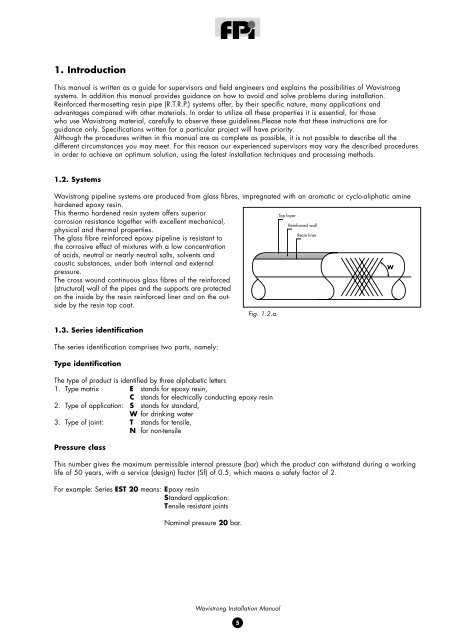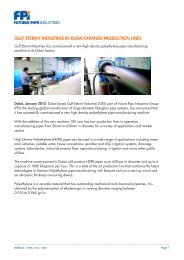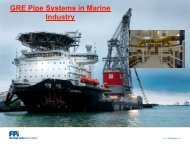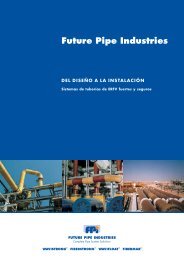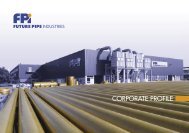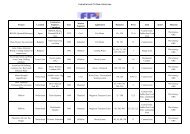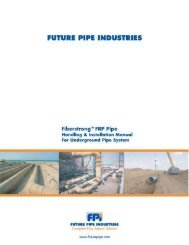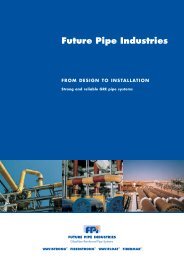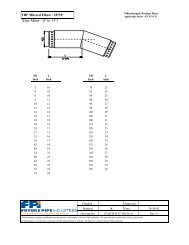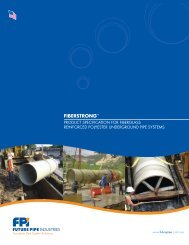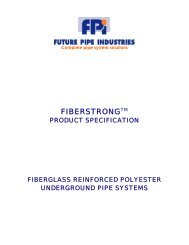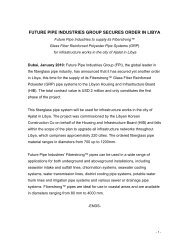Installation Manual - Future Pipe Industries
Installation Manual - Future Pipe Industries
Installation Manual - Future Pipe Industries
You also want an ePaper? Increase the reach of your titles
YUMPU automatically turns print PDFs into web optimized ePapers that Google loves.
1. Introduction<br />
This manual is written as a guide for supervisors and field engineers and explains the possibilities of Wavistrong<br />
systems. In addition this manual provides guidance on how to avoid and solve problems during installation.<br />
Reinforced thermosetting resin pipe (R.T.R.P.) systems offer, by their specific nature, many applications and<br />
advantages compared with other materials. In order to utilize all these properties it is essential, for those<br />
who use Wavistrong material, carefully to observe these guidelines.Please note that these instructions are for<br />
guidance only. Specifications written for a particular project will have priority.<br />
Although the procedures written in this manual are as complete as possible, it is not possible to describe all the<br />
different circumstances you may meet. For this reason our experienced supervisors may vary the described procedures<br />
in order to achieve an optimum solution, using the latest installation techniques and processing methods.<br />
1.2. Systems<br />
Wavistrong pipeline systems are produced from glass fibres, impregnated with an aromatic or cyclo-aliphatic amine<br />
hardened epoxy resin.<br />
This thermo hardened resin system offers superior<br />
Top layer<br />
corrosion resistance together with excellent mechanical,<br />
Reinforced wall<br />
physical and thermal properties.<br />
Resin liner<br />
The glass fibre reinforced epoxy pipeline is resistant to<br />
the corrosive effect of mixtures with a low concentration<br />
of acids, neutral or nearly neutral salts, solvents and<br />
caustic substances, under both internal and external<br />
W<br />
pressure.<br />
The cross wound continuous glass fibres of the reinforced<br />
(structural) wall of the pipes and the supports are protected<br />
on the inside by the resin reinforced liner and on the outside<br />
by the resin top coat.<br />
Fig. 1.2.a.<br />
1.3. Series identification<br />
The series identification comprises two parts, namely:<br />
Type identification<br />
The type of product is identified by three alphabetic letters<br />
1. Type matrix E stands for epoxy resin,<br />
C stands for electrically conducting epoxy resin<br />
2. Type of application: S stands for standard,<br />
W for drinking water<br />
3. Type of joint: T stands for tensile,<br />
N for non-tensile<br />
Pressure class<br />
This number gives the maximum permissible internal pressure (bar) which the product can withstand during a working<br />
life of 50 years, with a service (design) factor (Sf) of 0.5, which means a safety factor of 2.<br />
For example: Series EST 20 means: Epoxy resin<br />
Standard application:<br />
Tensile resistant joints<br />
Nominal pressure 20 bar.<br />
Wavistrong <strong>Installation</strong> <strong>Manual</strong><br />
5


